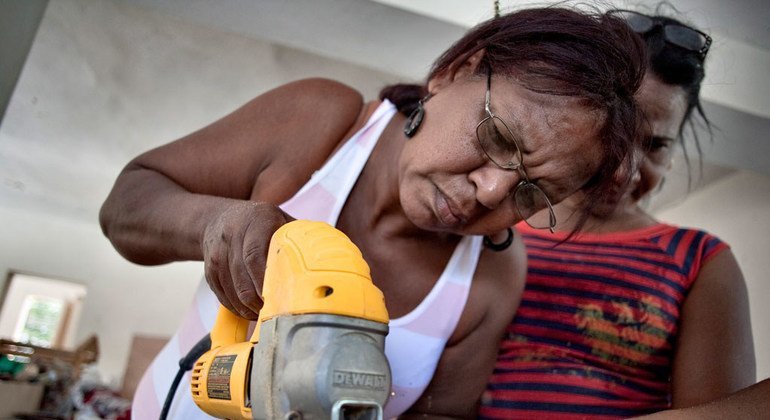The serious economic crisis caused by inflation and the slowdown in growth is causing a severe drop in real monthly wages in many countries, reported Wednesday the International Labor Organization.
According to a new report by the agency, this set of factors, which largely led to the war in Ukraine and the increase in energy costs, is reducing the purchasing power of the middle classes and is particularly hard on low-income households.
The Global Wage Report 2022-2023: The impact of inflation and COVID-19 indicates that during the first half of 2022 monthly wages decreased in real terms by 0.9%; the first time this century that global real wage growth has been negative.
In the advanced economies of the G20, real wages decreased by 2.2% during the first half of this year, while in the emerging economies wage growth slowed, but maintained a positive value of 0.8%.
In Latin America and the Caribbean, real wage growth slowed to minus 1.4% in 2021 and minus 1.7% during the first half of 2022.
danger of social unrest
The decline in wages “has placed dozens of millions of workers in a desperate situationas they face increasing uncertainty,” said the director-general of the International Labor Organization, releasing the report.
Albert F. Houngbo predicted that “income inequality and poverty will increase if the purchasing power of the lowest paid is not maintained.”
In addition, the much-needed economic recovery from the pandemic could be jeopardized, which “could fuel further social unrest around the world and undermine the goal of achieving prosperity and peace for all,” it warned.
Rains, it pours
Inflation has a greater impact among low-wage earners, as it adds to the significant losses for workers and their families recorded during the COVID-19 crisis.
The report shows that rising inflation and the cost of living hit people with lower incomes the hardest. This is because they spend much of their disposable income on essential goods and serviceswhich generally experience a higher price increase than non-essential products.
In addition, according to the report, inflation is undermining the purchasing power of minimum wages.
Estimates show that, despite the nominal adjustments introduced, accelerating inflation is rapidly eroding the real value of minimum wages in many countries for which data is available.
Measures to maintain living standards
The study shows that there is an urgent need for well-designed policy measures aimed at sustaining the purchasing power and living standards of salaried workers and their families.
The proper adjustment of minimum wage rates can be an effective toolgiven that 90% of the member States of the International Labor Organization have minimum wage systems.
Strong tripartite social dialogue and collective bargaining can also contribute to achieving adequate wage adjustments during a crisis.
Other measures that can mitigate the impact of the cost of living crisis on households include measures aimed at specific groups such as grants to low-income families to help them acquire essential goods, or reducing the tax on the added value of these goods to alleviate the burden of inflation that weighs on households and, at the same time, contribute to lowering inflation levels.
“We must pay special attention to workers at the bottom and middle of the wage scale,” said Rosalia Vazquez-Alvarez, one of the report’s authors.
For Vázquez-Álvarez, Fighting the decline in real wages can help maintain economic growth which, in turn, can help recover the employment levels registered before the pandemic.
“This can be an effective way to decrease the probability or intensity of recessions in all countries and regions,” he said.

regional differences
Containing regional and country data, the report shows that in the first half of 2022 inflation increased proportionately faster in high-income countries than in low- and middle-income countries, leading to the following regional trends in inflation: of actual salary:
- In North America (Canada and the United States), average real wage growth hit zero in 2021 and slowed to minus 3.2% in the first half of 2022
- In Latin America and the Caribbean, real wage growth slowed to minus 1.4% in 2021 and minus 1.7% in the first half of 2022
- In the European Union, where job preservation programs and wage subsidies largely protected employment during the pandemic, real wage growth rose from 1.3% in 2021 and fell to minus 2.4% in the first semester of 2022
- In Eastern Europe, real wage growth slowed to 4.0% in 2020, 3.3% in 2021, and less than 3.3% in the first half of 2022
- In Asia and the Pacific, real wage growth increased to 3.5% in 2021 and slowed to 1.3% in the first half of 2022. If China is excluded from these calculations – considering the significant weight of this country in the region – real wage growth was much lower, 0.3% in 2021 and 0.7% in the first half of 2022
- In Central and Western Asia, real wage growth posted strong growth of 12.4% in 2021, but slowed to 2.5% in the first half of 2022
- In Africa, the data suggest a fall in real wage growth of minus 1.4% in 2021 and a decline to less than 0.5% in the first half of 2022
- In the Arab States, wage trends are tentative, but estimates point to low real wage growth of 0.5% in 2021 and 1.2% in 2022











